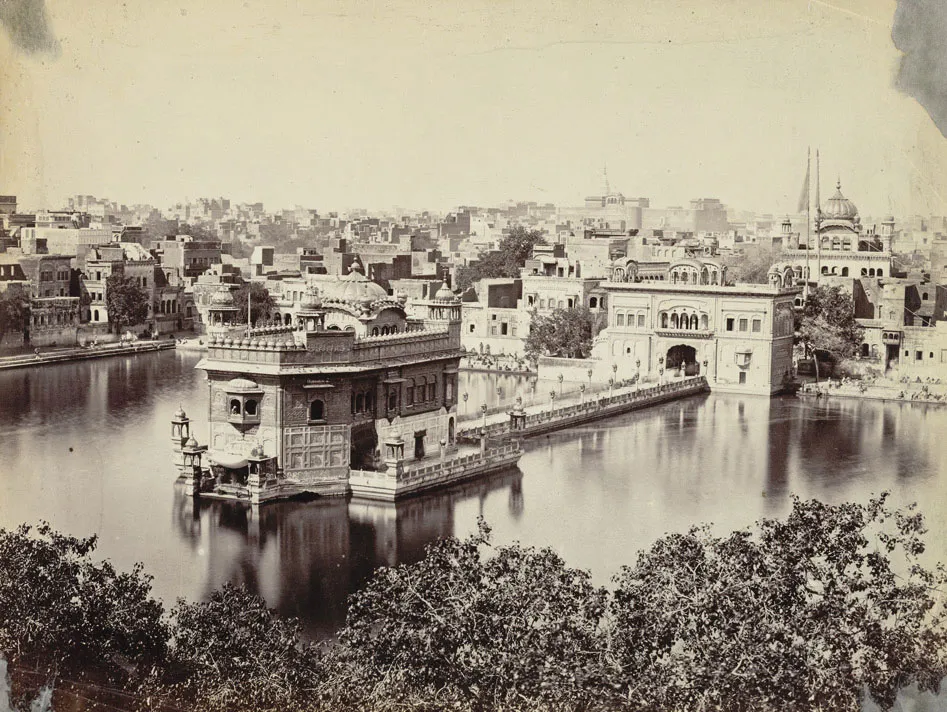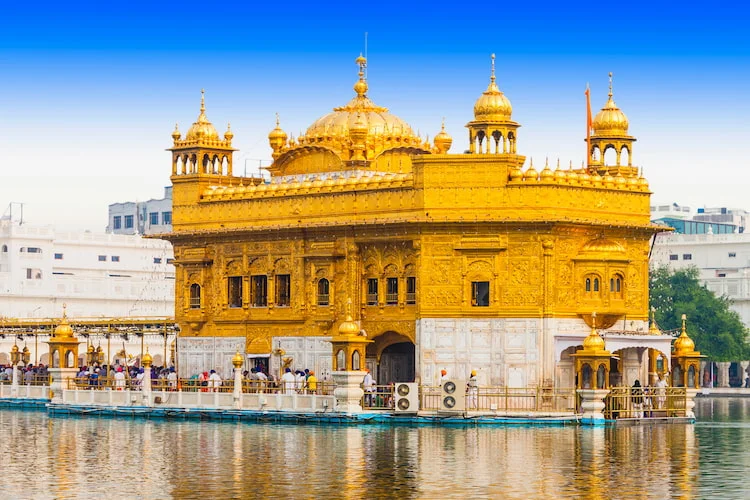History of The Golden Temple

History of The Golden Temple – Darbar Sahib (Golden Temple) has been named after Hari (God), the shrine of God. It is sometimes referred to as Sri Darbar Sahib or Golden Temple (due to its scenic splendor and golden coating for the English-speaking world). Every day, Sikhs from all over the world long to travel to Sri Amritsar and offer prayers at Sri Darbar Sahib Amritsar, also known as The Golden Temple Amritsar, during their Ardas.
The Fifth Nanak, Guru Arjan Dev Ji, was the one who came up with the concept to build Sri Darbar Sahib Amritsar, also known as The Golden Temple Amritsar, and he also planned the building’s architecture. Originally, Guru Amar Das Ji, the Third Nanak, planned the excavation of the holy tank (Amritsar, or Amrit Sarovar), but Guru Ram Das Ji carried it out under Baba Budha ji’s supervision. The Zamindars, or landowners, of the local villages gave the earlier Guru Sahibs the land for the location in exchange for payment or without charge. Additionally, a town settlement plan was created. As a result, in 1570, work on the Sarovar (the tank) and the settlement began at the same time. Both projects were finished by the year 1577 A.D. in the History of The Golden Temple.

Who provided land for Amritsar’s Golden Temple, Sri Darbar Sahib?
The Zamindars, or landowners, of the local villages were paid by Guru Ram Das Ji for the land that now stands on this spot. On the first day of Magh, 1645 Bikrmi Samvat (December, 1588). A Muslim saint named Hazrat Mian Mir ji of Lahore set the foundation for Guru Arjan Dev Ji. Leading Sikh figures including Baba Budha ji, Bhai Gurdas ji, Bhai Sahlo ji, and numerous more committed Sikhs helped Guru Arjan Dev Ji personally oversee the construction project.
As opposed to building it on the upper level, Guru Arjan Dev Ji had it constructed on the lower level, and Guru Sahib had it opened from all four sides. As a result, he produced the Sikhism emblem, a new faith. Everyone can access the Guru Sahib, regardless of caste, creed, sexual orientation, or religion.
The construction was finished on Bhadoon Sudi 1st, 1661 Bikrmi Samvat (August/September, 1604). In the year 1601 A.D. in the History of the Golden Temple. In Sri Darbar Sahib Amritsar, also known as The Golden Temple Amritsar, Guru Arjan Dev Ji erected the recently composed Guru Granth Sahib and named Baba Budha ji as its first Granthi, or the Sahib’s reader. Following this incident, it became known as “Ath Sath Tirath.” The Sikh Nation now had a Tirath, or place of pilgrimage, of its own.
Key Features of The Golden Temple
Located in the middle of the Sarovar (tank), Sri Darbar Sahib Amritsar, also known as The Golden Temple Amritsar, is constructed on a 67-foot-square platform. The actual temple measures 40.5 feet square. Every direction has a door: east, west, north, and south. At the causeway’s coastal end is the Darshani Deori, an arch. The arch’s door frame is roughly ten feet tall and eight feet six inches in circumference. The door panes are artistically adorned. It opens up into the causeway or bridge that leads to Sri Darbar Sahib Amritsar’s main structure, also known as The Golden Temple Amritsar. Its length is 202 feet, and its breadth is 21 feet.

The 13-foot-wide “Pardakshna” (circumambulatory path) is connected to the bridge. It goes to the “Har ki Paure” (the steps of God), and it circles the main shrine. The Guru Granth Sahib is read aloud continuously on the first level of “Har Ki Pauri”. Both technically and operationally, the main building of Sri Darbar Sahib Amritsar, also known as The Golden Temple Amritsar, is three stories high. The roof of the first story is 26 feet and 9 inches high, and the front, which faces the bridge, is embellished with recurrent cusped arches.
The Structure of Darbar Shaib
The first floor has a four-foot-tall parapet rising on all four sides, with four “Mamtees” at each corner. The third story rises precisely on top of the main sanctuary’s central hall. It has three gates and is a little square room. There is also a regular recitation of the Guru Granth Sahib. The low fluted “Gumbaz” (dome) with an inverted lotus at the top and a lotus petal motif in relief at the base supports the “Kalash” with a lovely “Chhatri” at the end of the chamber.Its architecture is regarded as among of the best in the world. The claim that this architecture launched a distinct Sikh style of architecture in India’s art history is frequently cited.
Early Attacks and the Mughal Era (17th–18th Centuries)
The Golden Temple of Amritsar, Sri Darbar Sahib Amritsar, has seen many important historical moments throughout the ages. Some Mughal kings, such as Jahangir, began to recognize the expanding Sikh core in the early 17th century.
Later Mughal emperors, such as Aurangzeb, on the other hand, saw Sikhs as a threat and attacked the Gurudwara.
During the Afghan invasions in the 18th century. Sri Darbar Sahib Amritsar, also known as The Golden Temple Amritsar, sustained numerous damages.
The Operation Blue Star tragedy that occurred in June 1984 was among the most devastating ones. To drive away Sikh militants who had positioned themselves within the Gurudwara complex, the Indian Army launched a military operation. The operation claimed several lives, including civilian ones, and seriously damaged the Gurudwara.
 Reconstruction of Darbar Sahib
Reconstruction of Darbar Sahib
The Sikh community always repaired Sri Darbar Sahib Amritsar, also known as The Golden Temple Amritsar, following attacks. The early 19th-century Sikh Empire’s founder, Maharaja Ranjit Singh, was instrumental in the Gurudwara’s embellishment.
During his rule, the Gurudwara’s upper section was embellished with a copper dome. Covered in gold foil, earning it the moniker “Golden Temple.” Under his leadership, Amritsar developed into a hub of Sikh power and trade prospered.
Community Service
The Langar, or Free Community Kitchen, is a standout feature of the History of The Golden Temple Amritsar. Here, free meals are offered to all guests, regardless of background. The founder of Sikhism, Guru Nanak Dev Ji, started this custom, which stands for hospitality and equality.
Cultural Significance
In addition to being a religious landmark, Sri Darbar Sahib Amritsar, popularly known as The Golden Temple Amritsar, is a cultural icon of Punjab and India. Millions of tourists go from all over the world each year to see it because of its historical significance, spiritual aura, and stunning architecture.



